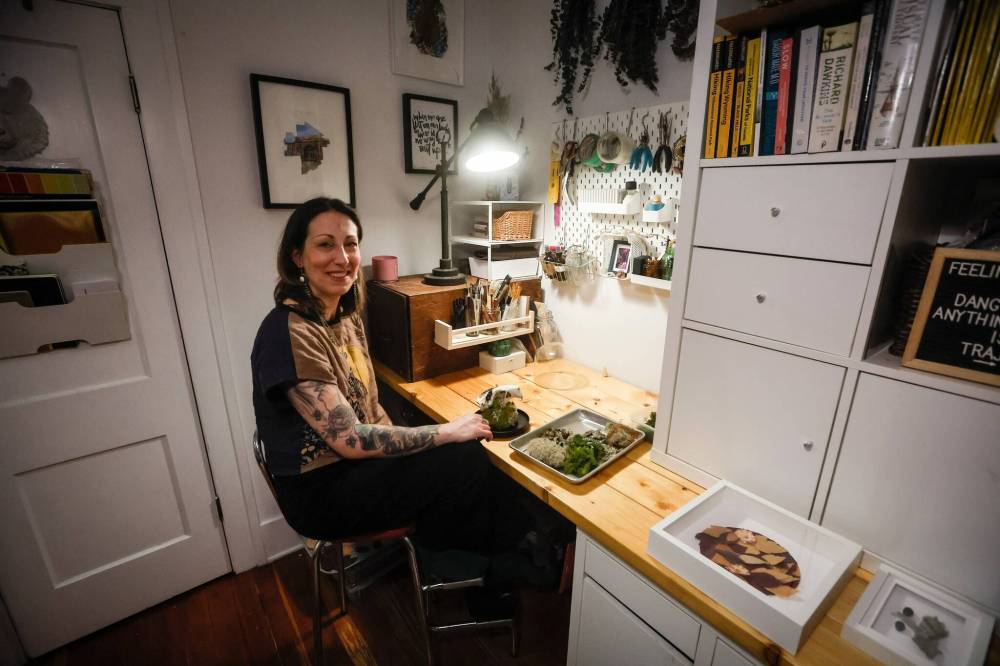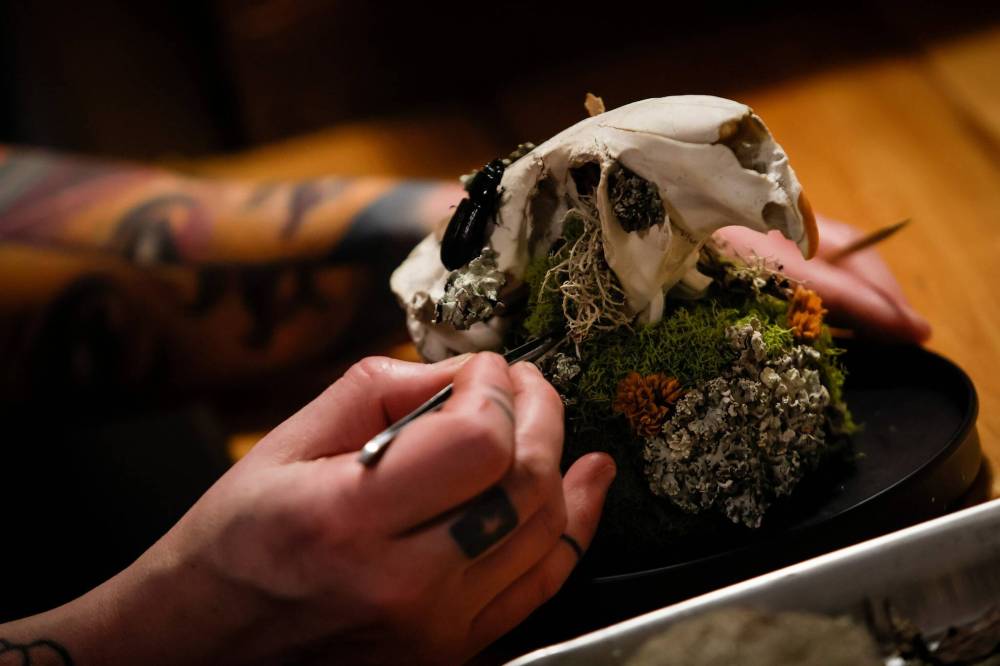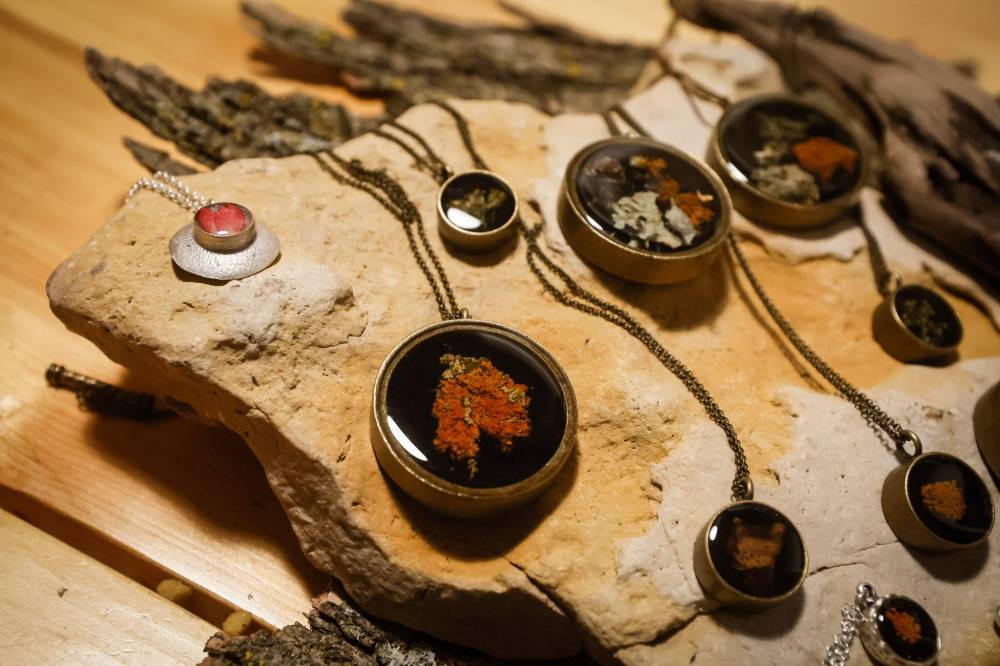Grief and the seeds of growth Process of facing fears through tactile works helps artist and others cope with loss
Read this article for free:
or
Already have an account? Log in here »
To continue reading, please subscribe:
Monthly Digital Subscription
$0 for the first 4 weeks*
- Enjoy unlimited reading on winnipegfreepress.com
- Read the E-Edition, our digital replica newspaper
- Access News Break, our award-winning app
- Play interactive puzzles
*No charge for 4 weeks then price increases to the regular rate of $19.00 plus GST every four weeks. Offer available to new and qualified returning subscribers only. Cancel any time.
Monthly Digital Subscription
$4.75/week*
- Enjoy unlimited reading on winnipegfreepress.com
- Read the E-Edition, our digital replica newspaper
- Access News Break, our award-winning app
- Play interactive puzzles
*Billed as $19 plus GST every four weeks. Cancel any time.
To continue reading, please subscribe:
Add Free Press access to your Brandon Sun subscription for only an additional
$1 for the first 4 weeks*
*Your next subscription payment will increase by $1.00 and you will be charged $16.99 plus GST for four weeks. After four weeks, your payment will increase to $23.99 plus GST every four weeks.
Read unlimited articles for free today:
or
Already have an account? Log in here »
Jess Young’s forest was seeded in a time of profound sorrow.
In the summer of 2020, on the way back from a camping trip at Turtle Mountain Provincial Park, the artist learned her biological father Robert Forrest had died.
There was more loss in store as Young’s step-grandfather, her two close friends and her dog also died that same year.

JOHN WOODS / FREE PRESS
Artist Jess Young creates jewelry from foraged flora and fauna.
“There was a lot of death, it felt completely unbearable and it broke me in ways I didn’t know I was capable of,” Young says.
The losses filled her with a rising sense of horror every time she contemplated the eventual death of those she was closest to, and Young became fixated on the idea of losing her mother.
“I recognized I was really afraid of my mother dying, I was so stuck on the idea and I couldn’t quite figure out why. I’ve spent a couple of years since then thinking about death and grief, trying to find words to it and a place to put it,” she says.
Young began to examine her fears to understand why she was so scared. She realized it wasn’t death itself, it was the unpredictable nature of the inevitable grief that follows that was frightening.
“You know grief requires a whole lot of stamina,” she says.
“You can’t avoid it. Folks think they are afraid of death but really it’s the grief. They are afraid of how something is going to hit them in a way they’re not capable of holding. And if it’s people who are close to you and important, who have been part of your life (who die), that grief changes who you are because all those aspects of that person are integrated into you.”
This understanding led her to create The Youngest Forest, which combines the surnames of her stepfather and her biological dad.

JOHN WOODS / FREE PRESS
Young builds terrariums with tiny skulls sitting on soft moss.
Using materials she forages from nature, as well as items gifted by friends and family, Young builds terrariums featuring tiny skulls sitting on soft moss, crafts pendants filled with blossoms and wispy feathers to hang off silver and gold necklaces and layers of fallen leaves to make her collages.
She also takes on commissions, incorporating the ashes of a pet or a loved one with foraged flora to create memorial pendants for those nursing losses.
“I think people really want to be close to death, but death is frightening. Having something beautiful that represents death is a good, tangible way to stand up close to it without it feeling too sticky,” she says.
Working in her home studio, Young carefully sorts and organizes, pressing fallen flower petals between the pages of books, tucking mosses into slips of tissue paper and picking through driftwood, tree bark and fragments of bone to place into tiny boxes.
Gathered through the years, it’s a collection she’s been growing steadily since childhood, without knowing quite why.
As a child there was nothing Young adored more than picking up sticks and stones and bits of moss from the woods and forests surrounding her grandmother’s house where she’d spend up to a month of her summer holidays.
It’s a habit Young has carried well into her adulthood although now she knows why she started collecting in the first place.

JOHN WOODS / FREE PRESS
Young also creates pendants filled with blossoms and feathers.
“I’ve always been creative but I’ve never done anything as tactile as this before. I’ve collected all sorts of nature stuff my whole life but never really had a use for it. So this was just sort of an ‘aha’ moment for me, when I realized why I was keeping all of these things,” she says.
While the act of creation began from a place of sadness, these days Young creates from a different perspective. Yes, her grief remains but she has learned to work with it, rather than against.
“It oscillates. There is a lot of back and forth. When I made those first things, the grief that drew me to making was that I desperately needed to transform something. I needed to kill the beast. And now, while that beast, that grief is still there, now I have provisions, I have company with me, somebody with a different version of the map I already had. And I’m not as frightened… it’s not as dark,” she says.
av.kitching@freepress.mb.ca

AV Kitching is an arts and life writer at the Free Press. She has been a journalist for more than two decades and has worked across three continents writing about people, travel, food, and fashion. Read more about AV.
Every piece of reporting AV produces is reviewed by an editing team before it is posted online or published in print — part of the Free Press‘s tradition, since 1872, of producing reliable independent journalism. Read more about Free Press’s history and mandate, and learn how our newsroom operates.
Our newsroom depends on a growing audience of readers to power our journalism. If you are not a paid reader, please consider becoming a subscriber.
Our newsroom depends on its audience of readers to power our journalism. Thank you for your support.
